Alaska Mileage Plan and Cathay Pacific Asia Miles both rank among the most effective frequent flyer programs for Canadian travellers, and in many ways, the sweet spots of these two programs largely overlap with each other in the form of premium cabin redemptions to and from Asia.
How, then, do the two programs compare, and should you choose to focus on one over the other given your specific travel goals? In this installment of the Head-to-Head series, we’ll look for some answers by comparing the two programs in all the ways that matter.
Earning Miles
The first key point of comparison lies in how easy it is to accumulate miles; all the redemption sweet spots in the world mean nothing if the miles are very difficult to earn. Thankfully, both Alaska and Asia Miles offer an abundance of mileage earning methods.
(We’ll gloss over the possibility of earning miles by, you know, actually flying – after all, we’re far more interested in racking up the points for as little out-of-pocket cost as possible.)
Co-Branded Credit Cards
Partnering with a financial institution to offer a co-branded credit card product is one of the most significant ways that an airline can entice Canadians to participate meaningfully in their program.
Alaska Airlines partners with MBNA to offer the MBNA Alaska Airlines MasterCard, which comes in two flavours: the World Elite version for those with at least $80,000 in annual personal income, and a Platinum Plus version for those who don’t meet the requirement.
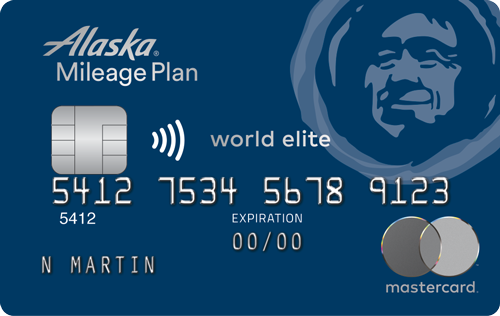
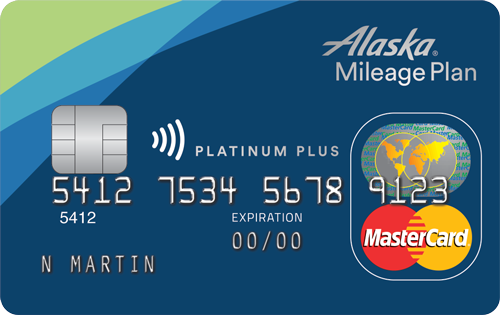
The signup bonuses are 30,000 and 20,000 Alaska miles, respectively, after spending $1,000 in the first three months, along with annual fees of $99 and $75. In both cases, you can get a $60 rebate by applying via Great Canadian Rebates, bringing the net cost down to either $39 or $15.
You can’t hold both versions of the card at once, although you can follow the product-switch-and-ask-to-split-credit method to alternate between the two versions in quick succession.
Meanwhile, Asia Miles partners with RBC to offer the RBC Cathay Pacific Visa Platinum, which has a tiered signup bonus of 15,000 Asia Miles after first purchase, 10,000 Asia Miles after spending $6,000 in the first three months, and another 10,000 Asia Miles after keeping the card for one year. The annual fee on this card is $120, a higher expense than both MBNA Alaska products, and we haven’t really seen any First Year Free or cash back offers either.
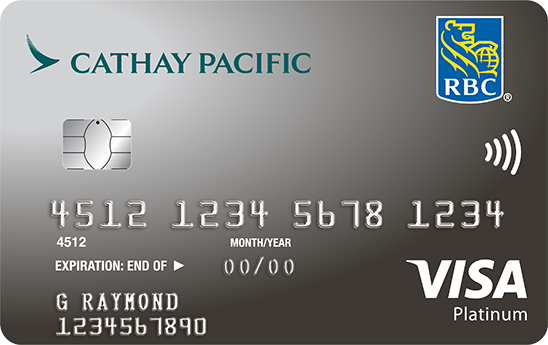
Verdict: With a higher meaningful signup bonus, lower minimum spending requirement, lower annual fees and a cash back offer to sweeten the deal, and two separate versions of the card between which users may alternate, Alaska wins this round hands-down.
Credit Card Spending
The returns on spending on the MBNA Alaska and RBC Cathay Pacific credit cards are pretty evenly matched. Both sets of cards offer 1 mile per dollar spent on general purchases, and both cards could be worthwhile to keep in your wallet as a MasterCard or Visa alternative to, say, the Amex Business Platinum for all your regular non-bonused spending.
When it comes to the spending bonuses on their respective airlines’ flights, the MBNA Alaska card offers 3x miles on Alaska Airlines purchases, while the RBC Cathay Pacific offers 2x miles on Cathay Pacific flights.
Verdict: It’s a tie between the MBNA Alaska and the RBC Cathay Pacific in terms of the return on regular spending, although I suppose the former’s more favourable return on Alaska’s own flights gives it a slight edge.

Transferring from Other Points Programs
Here’s where things get more interesting. Alaska Mileage Plan really only has one meaningful transfer partner, and that’s Marriott Bonvoy: you can transfer your Bonvoy points to Alaska at an optimal ratio of 60,000 Bonvoy points = 25,000 miles, as it the case with over 40 other frequent flyer programs.
Cathay Pacific Asia Miles, on the other hand, offers a wealth of transfer partners that Canadians can access pretty easily:
-
American Express Membership Rewards points transfer to Asia Miles at a 1:0.75 ratio
-
RBC Avion points transfer to Asia Miles at a 1:1 ratio (and often with 20% bonuses as well)
-
HSBC Rewards points transfer to Asia Miles at a ratio of 25,000 points = 8,000 Asia Miles
-
Marriott Bonvoy points transfer to Asia Miles at the optimal ratio of 60,000 points = 25,000 Asia Miles
Besides the above Canadian-domiciled programs, if you dabble with US credit cards, then your Amex US MR points can also be transferred to Asia Miles at a 1:1 ratio as well.
Both Amex MR and RBC Avion have a wide range of credit cards associated with the programs, and these additional credit cards go a long way towards outweighing the twin MBNA Alaska cards’ advantage over the single RBC Cathay Pacific card. In practice, thanks to Amex and RBC, it’s much easier to accumulate a large balance of Cathay Pacific Asia Miles than Alaska miles if you focus on earning miles via credit card signup bonuses.
Verdict: The possibility of transferring Marriott Bonvoy points is shared between both programs. But on top of that, in partnering with two of Canada’s most flexible transferrable currencies (as well as a niche currency in HSBC Rewards), Cathay Pacific Asia Miles wins this round pretty handily, and garners a significant advantage over Alaska miles in terms of the overall ease of earning points.
Buying Points
Finally, buying points outright can rarely seem like a good option; however, Alaska Mileage Plan will put that mentality to the test.
Alaska often sells their miles at a 30–50% bonus, with the 50% bonus usually being offered once or twice a year. During a 50% bonus, the cost to acquire Alaska miles is effectively 1.97 US cents per mile, so buying 70,000 Alaska miles (which is enough to fly Cathay Pacific First Class one-way from North America to Asia with a stopover, or onwards to South Africa in business class as well) would cost US$1,379 or roughly $1,800 in Canadian dollars – which is not a bad deal at all if you’d otherwise be willing to pay for the comfort of flying long distances in a premium cabin.
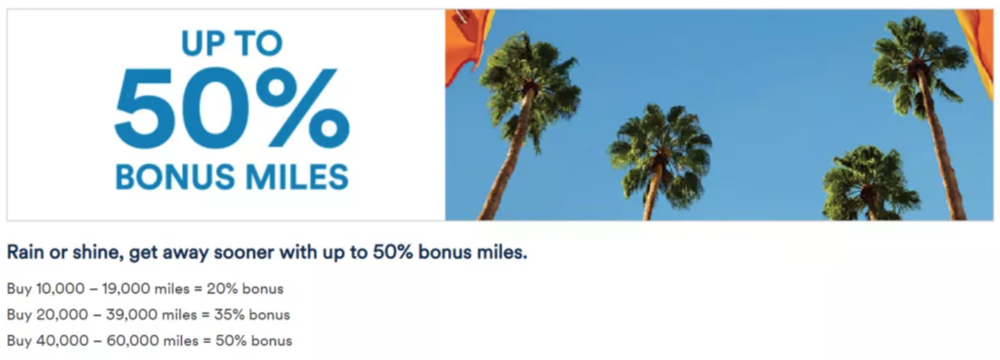
Asia Miles, on the other hand, will only sell miles when you have 70% of the required amount, when you can “top up” the other 30% at a rate of roughly 3 US cents per mile. Needless to say, this is a bad idea, and I’d sooner transfer my Marriott Bonvoy points over before buying miles at that price.
There are occasionally some niche possibilities of buying Asia Miles for as low as 1.67 US cents per point, but it all gets very complicated very fast, as it requires IHG Rewards to have a sale on buying points at the exact same time that Asia Miles is offering a 50% bonus on hotel transfers.
Verdict: Alaska sweeps this category in a clear victory, since they not only sell you miles directly (without a need to jump through hoops by buying other transferrable currencies), but they do so at a very reasonable price several times a year.
Redemption Sweet Spots
As a general truth in Miles & Points, the earning process is relatively straightforward compared to learning about redemption sweet spots, hunting down award space, and finalizing reservations, and so that’s where the meat of the Alaska vs. Asia Miles comparison lies.
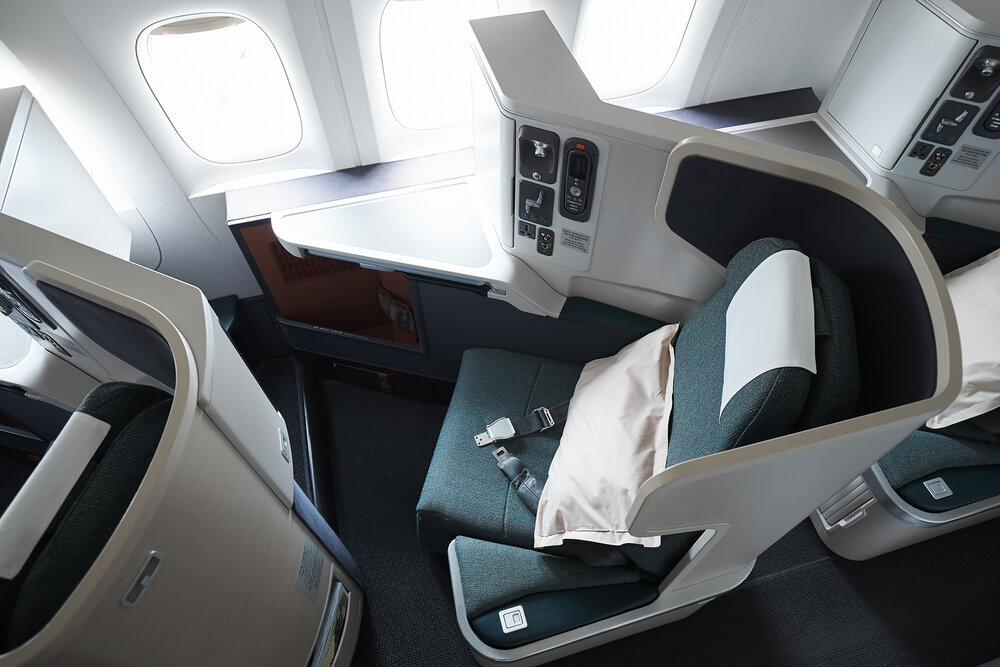
Airline Partners
Cathay Pacific is part of the Oneworld airline alliance, and therefore counts the 13 Oneworld members as its core partner airlines. In addition, they maintaining a few “side-piece” partnerships with a few other airlines like Air China, Air New Zealand, and indeed Alaska Airlines.
Meanwhile, Alaska Airlines is not part of any alliance, and instead only strikes up independent partnership agreements with various airlines around the world. A good chunk of these airlines are members of Oneworld, such as Japan Airlines, British Airways, Finnair, Qantas, and indeed Cathay Pacific. But Alaska also counts several other global airlines among its partners, notably Emirates, Singapore Airlines, Korean Air, Hainan Airlines, Aer Lingus, and Icelandair.
Verdict: It’s hard to say that either programs “wins” this round, although if I had to choose a winner, it would probably be Alaska Airlines.
That’s because if we exclude the airline partners that are common to both programs, then I’d favour Alaska’s partnerships with Emirates and Singapore Airlines (which Cathay doesn’t have) over Cathay’s partnerships with Qatar Airways, Air New Zealand, and the other Oneworld airlines (which Alaska doesn’t have), especially as someone who primarily likes to redeem miles for aspirational travel in business class and First Class.

Award Pricing & Routing Rules
The relative strength or weakness of a program is governed by both the award charts and the routing rules, and in order to compare these meaningfully and avoid getting lost in the details, it makes sense to restrict our focus to the most popular airline redemptions that are common to both programs: Cathay Pacific, Japan Airlines, and Qantas.
On the surface, if we look at the award pricing alone, Alaska Mileage Plan definitely seems to hold the advantage. Their mileage pricing on these three partners are extremely favourable (and are the main reason why these tend to be the most popular Alaska redemptions in the first place).
You can fly from North America to Asia on either Cathay Pacific or Japan Airlines, as well as North America to Australia on Qantas, for 55,000 miles in business class or 70,000 miles in First Class; furthermore, the Cathay Pacific redemption can be extended as far as South Africa, the Middle East, or Australia for a token premium.
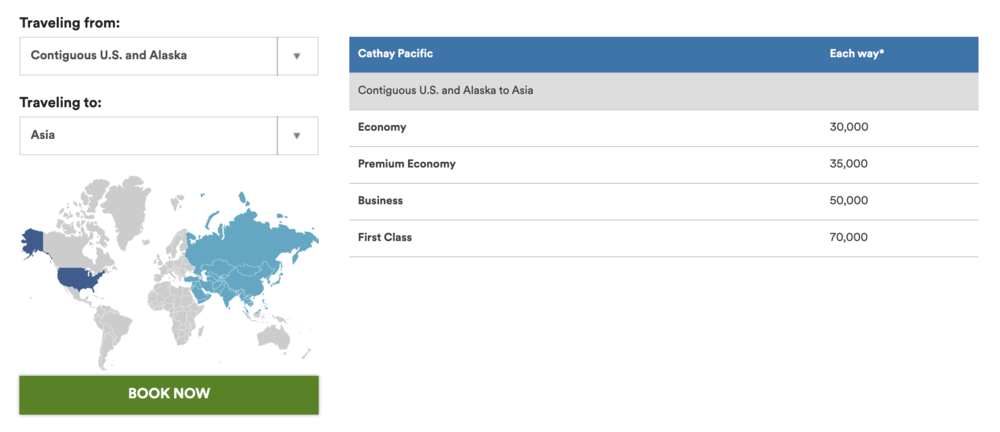
On these routes, the distance-based Cathay Pacific Asia Miles would charge a much higher amount, based on the exact distance flown: the Ultra-Long distance band, where most of these itineraries would fall, will cost you 85,000 Asia Miles in Cathay Pacific business class or 125,000 Asia Miles in Cathay Pacific First Class, with a premium for flying on a partner airline of 5,000 or 10,000 miles, respectively.

Taking into consideration the routing rules, however, adds a further layer of nuance.
First off, both Alaska and Asia Miles generously allow a free stopover on a one-way intercontinental flight, so the programs are evenly matched in that regard.
Then, let’s think about where in the world the two programs will allow you to fly. Alaska’s routing rules are basically determined by their exact partnership agreements – so while you’re allowed to redeem miles for Cathay Pacific or Qantas between North America and Australia, for example, you can’t do so on Japan Airlines, even though they fly to Sydney and Melbourne from Tokyo.
Asia Miles has no such restriction – you’re basically allowed to piece together two Oneworld flights in whichever fashion you want, which leads to several exciting possibilities like booking Toronto–Hong Kong–Madrid on Cathay Pacific, Vancouver–Tokyo–Sydney on Japan Airlines, or even Los Angeles–Sydney–London on Qantas, all with a stopover at the intermediate point.
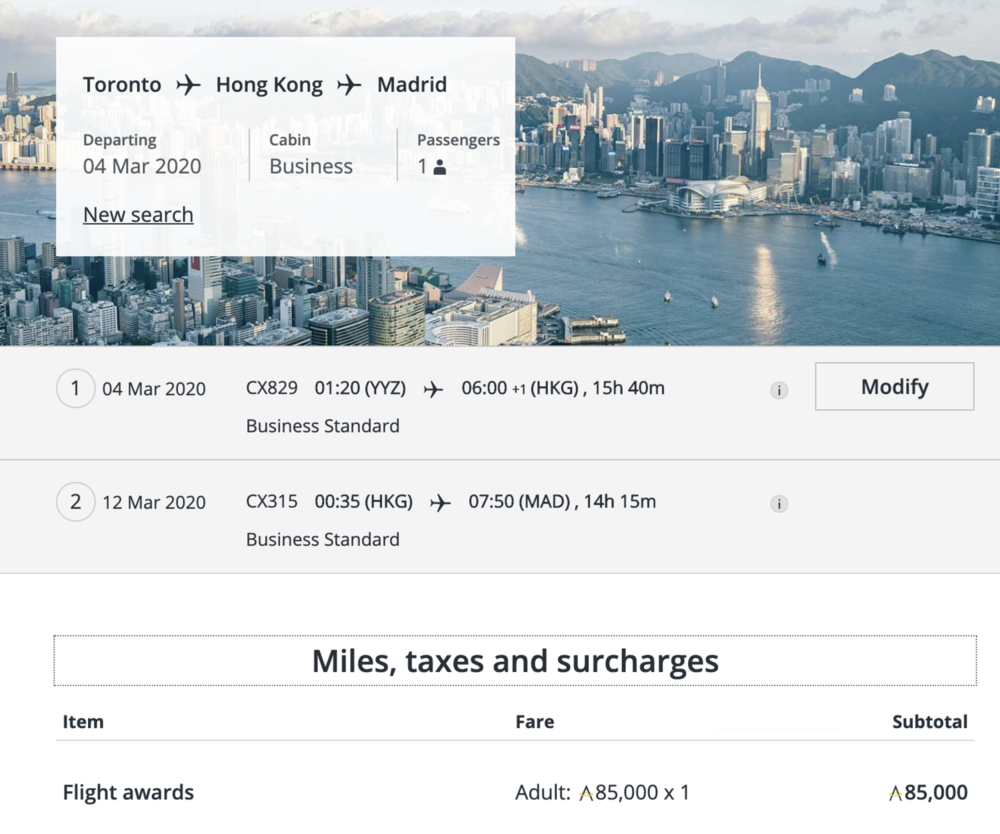
However, there’s also an important caveat here: notice that Cathay Pacific only lets you combine two flights in a one-way; anything more than two, and it’s either not bookable, or it becomes a Oneworld multi-carrier award that’s subject to an entirely different chart.
That restriction also has implications for those of you who are based in, say, Calgary or Edmonton – with Alaska miles, you can fly on Alaska Airlines down to San Francisco or Los Angeles, and then begin your premium redemption from there; however, with Cathay Pacific Asia Miles, you’ll need to book a separate flight to get to your gateway airport.
Verdict: Depending on the specific route you’re looking at, Alaska and Asia Miles can both win this round.
If you’re looking to fly Cathay Pacific down to South Africa, for example, forget about their own program and concentrate on the sweet spot of redeeming just 70,000 Alaska miles for the entire journey. But if you want to travel to Europe with a stopover in Asia (or even Australia!), there’s arguably no better-suited program than Asia Miles, whose routing rules are extremely flexible in some ways (in that they allow you to travel on virtually any route) and rather restrictive in others (in that you can only combine two flights into a one-way).
Finally, the two programs are also evenly matched in that their IT systems have both been known to take rather rigid interpretations of the routing rules and offer up some particularly generous redemption opportunities as a result. 😉
Fuel Surcharges
In addition to the rules and charts, another factor that plays a big role in determining the overall usefulness of a program is whether or not it passes on fuel surcharges on mileage redemptions.
With Alaska miles, the overall picture is quite favourable: the most popular award redemptions – like Cathay Pacific or Japan Airlines for flying to Asia, Qantas or Fiji Airways for flying to Oceania, Aer Lingus for flying to Europe, and Emirates or Singapore Airlines for aspirational luxury travel, all do not have any associated fuel surcharges, and you’ll only pay the airport taxes and Alaska’s US$12.50 partner booking fee when redeeming your miles.
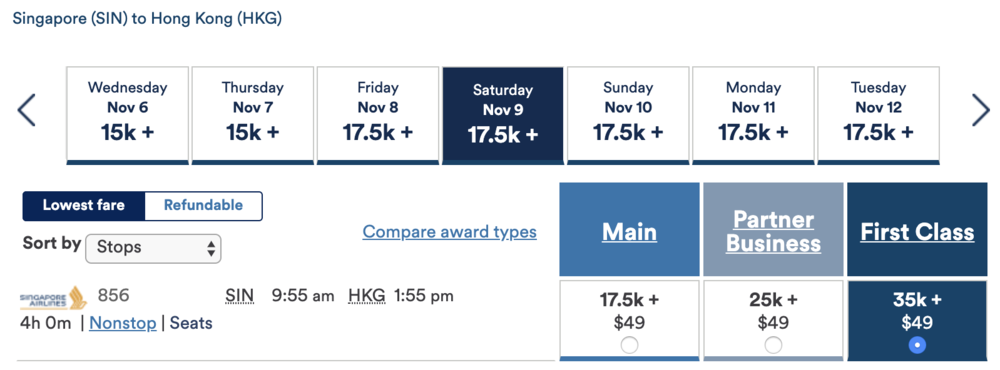
Hainan Airlines has reasonable fuel surcharges of about US$150–200 per direction, which isn’t too bad for the convenience of direct flights to China from several points in North America. Meanwhile, fuel surcharges on long-haul British Airways flights can get very expensive, but that’s the case with virtually all programs, and it’s easy to avoid redeeming on British Airways given the wealth of other partners.
On the other hand, Asia Miles tends to levy higher surcharges across the board – an itinerary on Cathay Pacific will probably run you about $300 in fees one-way, which isn’t too bad, but is about double what you’d pay using Alaska miles.
British Airways and Qatar Airways, in particular, also levy extremely high surcharges that can reach $500–1,000 for a single one-way trip, so you’ll probably want to originate in a country that has regulated fuel surcharges if you want to redeem Asia Miles on those carriers.
Verdict: Victory for Alaska, since they generally pass on lower fuel surcharges than Asia Miles; however, this will be only one of several factors to consider when deciding between which program to use for the specific trip you want to take, since, for example, Asia Miles’s higher surcharges could easily be worthwhile thanks to their more generous routing rules.
Award Availability & Ease of Redeeming
Finally, it’s also important to consider how easily one can search for award space and make bookings with each of the programs. And since Cathay Pacific is a full-fledged member of Oneworld, while Alaska Airlines is a non-alliance partner, it’s generally the case that Asia Miles enjoys access to equal or greater award availability than Alaska Mileage Plan on the Oneworld airline partners they have in common.
This is especially noticeable on Cathay Pacific itself – the airline releases far more premium award seats to members of their own program than to partner airlines, so if you want to book Cathay Pacific business class or First Class, you’ll have the best chance of finding available seats if you go through Asia Miles (especially if you’re looking for two or more award seats).

Cathay Pacific First Class
What’s more, Asia Miles allows you to easily search for Cathay Pacific flights online, whereas these flights have never been searchable on the Alaska Mileage Plan website, and instead you always need to call Alaska to search and book on Cathay Pacific.
And because of the aforementioned mismatch in award availability for a non-alliance partner like Alaska, the only way to know reliably which Cathay seats are available to Alaska members is to call and search with a phone agent on a day-by-day basis.
Verdict: Thanks to its full membership in Oneworld, Asia Miles enjoys greater access to award availability on their partner airlines and especially on their own Cathay Pacific flights. On the other hand, while Alaska’s unique model of independent partnerships is a good fit for the airline in many ways, the fact that its members only have access to a more limited subset of award availability is one of its few downsides.
Conclusion
Alaska miles are some of the most coveted frequent flyer miles here in Canada, and for good reason: they’re easy to earn with MBNA’s generous credit card policy, and they also provide access to many business class and First Class redemptions at some of lowest mileage costs in the industry and with minimal fuel surcharges.
On the other hand, Asia Miles is an often-overlooked program that offers excellent one-way redemptions (including a stopover, just like Alaska), generous routing rules, also significantly greater availability on Cathay Pacific flights. Combine that with their ease of earning, and in my view, Asia Miles has a slight edge over Alaska miles.
Indeed, the savvy aspirational flyer may well be tempted to save their Alaska miles for Emirates and Singapore Airlines and book all the Oneworld premium cabins on Asia Miles instead!









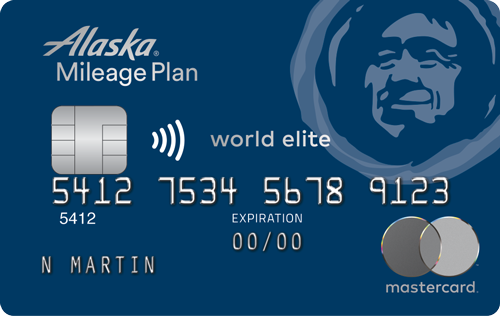





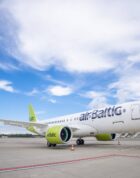



Question, my wife and I live in Manila, and we fly paid Cathay Business Class 1-2 times a year to the US, along a few intra Asian trips to Japan, Singapore, Thailand in paid business class. We don’t have access to any US branded credit cards as we live and work in the Philippines. We do have the BDO Cathay Pacific Elite AMEX card which it earns on everyday spend, and 2xs on CX ticket purchases, although sometimes they run a 5xs Asia Miles promo. Normally we will fly paid DL First Class from our point of entry to PIT in the US although last trip we entered the US at SEA and flew AS paid First Class non stop to PIT.
We use Asia Miles primarily for free First Class tickets in Cathay when we accrue enough miles, or to upgrade from Business to First Class on Cathay.
Would it make more sense to credit miles when flying CX to AS program as it only requires 70,000 miles one way for a First class redemption? Or just keep crediting to Aia Miles?
Thank you
Hi,
Alaska does not allow stop-over anymore .
Not true. I can still easily search one-way stopovers on the Alaska website.
They removed intra-Asia stopovers a while back, but that’s its own thing.
How do you search it? Yes, it does not allow for intra-Asia any more, up to last month I could see Del to NRT and NRT to KUL for 1 flight with stop over NRT , now I have to book to flights separately 🙁
Wait, what?
No more stopovers on one way redemptions on with them or their partner airlines?
how easy to earn asiamiles? 1M HKD 1 year time deposit, result 230k or 260k asiamiles.
I am curious as to how your strategy twoards Alaska Airlines MBNA cards has changed now that you are a Quebec resident?
Don’t Asia Miles expire 3 years after earning them? I would think that a major factor in deciding between the two as well.
yes they do. If one lets miles sit for three years then they have been accumulating points without a goal. However if you should find yourself in that position CP does have gift cards for points.
I’d love to see a post on award strategies for those based in South America (Buenos Aires, specifically). Any interest in addressing this underserved market?
IHG is currently having a 50% bonus sale on its points and Asia Miles is offering a 30% bonus on hotel points conversion. However, IHG Rewards are excluded from the Asia Miles promotion.
Darn it, I meant IHG is having a 100% bonus. I need a coffee.
Would one be more advantageous than the other if you are located in eastern Canada (Ontario) vs the West?
Good question. For those outside of Western Canada, Alaska has no advantage in terms of being able to serve your city directly since they don’t fly to any of the major cities. So I’d probably choose Asia Miles as the winner, since you’re much more likely to find availability in Cathay Pacific business class on the Toronto–Hong Kong route via Asia Miles than via Alaska.
For all other redemptions, you’d need to book a positioning flight to another city regardless of whether you’re using Alaska or Asia Miles, so they’re evenly matched there.
I live in Toronto. Flew my family of six (mum and brother included) from Iceland using Alaska aurmiles (from MBNA cards). Sweet spot even for easterners.